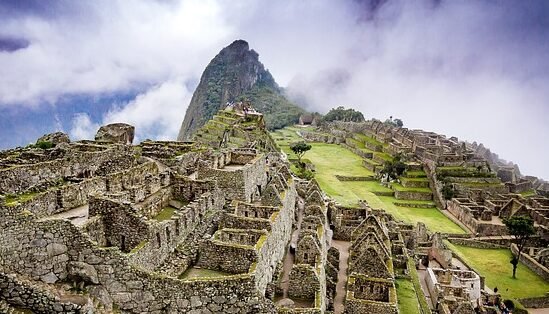Embarking on a journey through the annals of human history, archaeology stands as a beacon illuminating the tales of civilizations long past. It’s a discipline that unearths the remnants of ancient societies, offering us glimpses into their lives, cultures, and achievements. From the towering pyramids of Egypt to the enigmatic stone statues of Easter Island, archaeology unveils the rich tapestry of human existence, weaving together stories that span millennia. Join us as we delve into the depths of time, exploring some of the most captivating archaeological sites around the globe.

The Pyramids of Giza, Egypt:
Standing as enduring symbols of ancient Egyptian civilization, the Pyramids of Giza represent a pinnacle of architectural and engineering achievement. These monumental structures served as royal tombs for pharaohs, reflecting the Egyptians’ beliefs about the afterlife and the divine status of their rulers. The archaeological significance of the pyramids lies in their intricate construction techniques, which continue to intrigue scholars and visitors alike. They offer invaluable insights into the religious practices, social hierarchy, and technological prowess of ancient Egypt.
Machu Picchu, Peru:
Nestled high in the Andes Mountains, Machu Picchu is a marvel of Inca engineering and urban planning. This ancient citadel served as a sacred center, royal estate, and astronomical observatory for the Inca elite. Archaeological excavations have revealed intricate stonework, terraced agriculture, and sophisticated water management systems, showcasing the ingenuity of the Inca civilization. Machu Picchu’s archaeological importance lies in its preservation of Inca architecture and cultural heritage, providing a window into the beliefs and customs of this ancient civilization.
Pompeii, Italy:
Frozen in time by the eruption of Mount Vesuvius in 79 AD, Pompeii offers a unique glimpse into daily life in a Roman city. Excavations of this remarkably preserved site have uncovered well-preserved buildings, artifacts, and even human remains, providing a vivid picture of ancient Roman society. Pompeii’s archaeological significance lies in its role as a time capsule, offering unparalleled insights into Roman urban planning, social structure, and cultural practices. It serves as a valuable resource for understanding the impact of natural disasters on ancient civilizations and the processes of urbanization and cultural change.

Stonehenge, United Kingdom:
One of the most iconic prehistoric monuments in the world, Stonehenge has captured the imagination of scholars and visitors for centuries. This enigmatic stone circle, constructed over 4,500 years ago, continues to puzzle archaeologists with its purpose and significance. Recent archaeological research has shed light on Stonehenge’s role as a ceremonial and ritual site, possibly associated with burial practices, astronomical observations, and religious ceremonies. Its archaeological importance lies in its status as a UNESCO World Heritage Site and its role as a symbol of human ingenuity and spiritual expression.
Çatalhöyük, Turkey:
Dating back to the Neolithic period, Çatalhöyük is one of the world’s oldest known settlements. This sprawling archaeological site offers valuable insights into the early stages of human settlement and social organization. Excavations have revealed well-preserved houses, elaborate wall paintings, and evidence of early agriculture and trade networks. Çatalhöyük’s archaeological importance lies in its contribution to our understanding of the transition from hunter-gatherer societies to settled communities and the development of complex social structures. It serves as a key site for studying the origins of agriculture, urbanization, and cultural innovation in the ancient Near East.

Archaeology is Beautiful
As we conclude our expedition through the realms of archaeology, we’re reminded of the profound significance of these ancient sites. They serve as windows into our collective past, offering invaluable insights into the triumphs and tribulations of those who came before us. From the majestic ruins of Machu Picchu to the haunting relics of Pompeii, each archaeological marvel is a testament to the enduring legacy of human ingenuity and perseverance. As stewards of our shared heritage, it is our duty to safeguard these treasures for future generations, ensuring that the stories they tell continue to inspire and enlighten for centuries to come.

